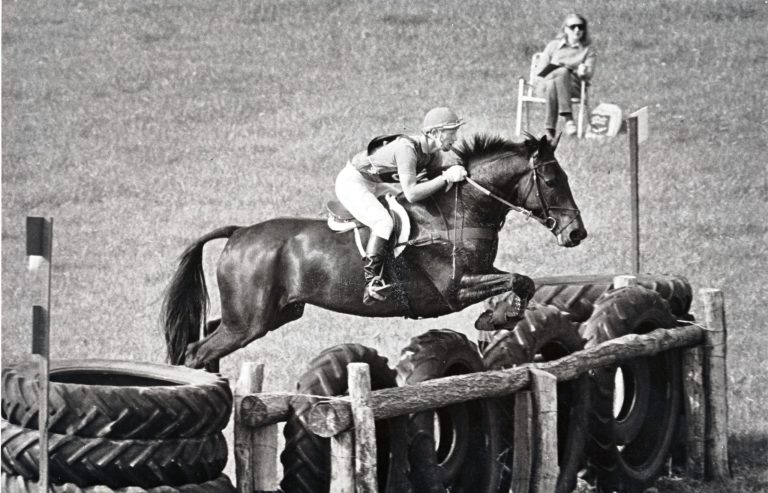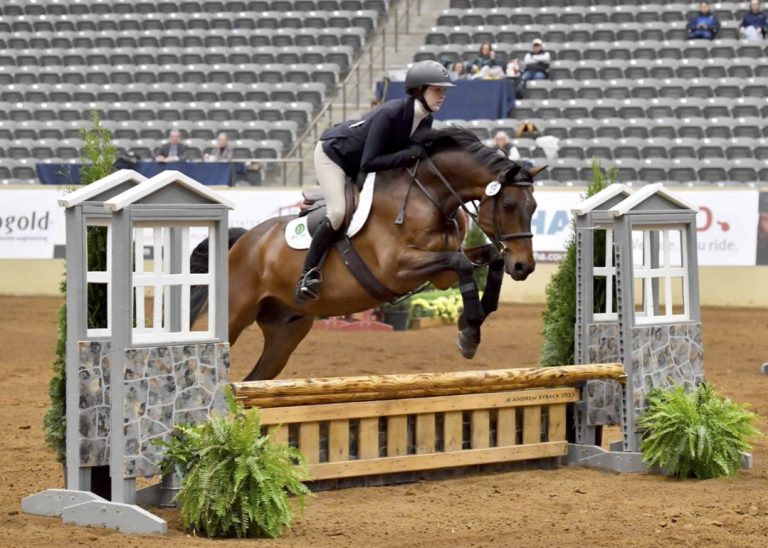
Come spring, most high-school seniors will experience the joy and relief of getting accepted into a college. For equestrians, however, the moment may be tempered by a tough decision: whether and how to keep horses in your life for the next four years of school.
Below are 10 suggestions to make that decision easier.
1. Take Your Horse with You
Ask 10 people if it’s a good idea to take your horse to college and you’ll get 11 different answers. Add to that the myriad variables involved, starting with academic goals, riding ambitions, budget and time availability, and there’s no easy answer. There is a consensus that having your horse at school adds a heavy ball to what is already a juggling act of your college experience. Some riders swear by it, reporting that having their steed at school maintains structure and continuity in their lives and mandates careful time management—often money management, too. The hard work of horsemanship can be a stress reliever and simple quiet time with your horse can offer comfort in this new and unfamiliar phase of life.
The cost of keeping a horse at or near your school varies, but there are ways to defray it. If you choose a school with a riding team, you may be able to lease your horse part-time to the team. Privately owned stables may offer the chance to work off board by mucking stalls, teaching lessons or helping with online marketing.
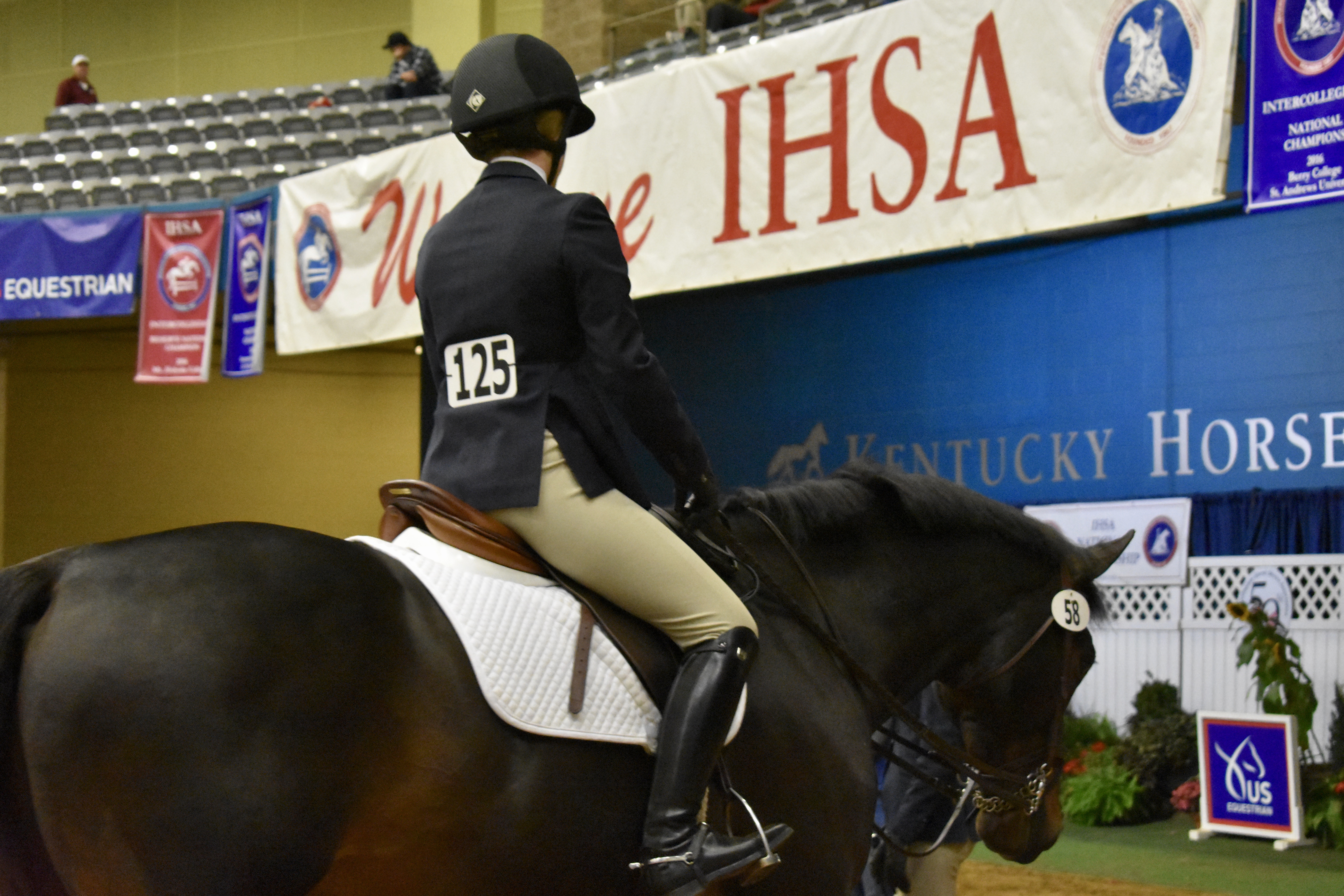
2. Ride for Your School Team
You don’t need your own horse to ride for most collegiate equestrian teams, so this is a much less expensive way to stay in the saddle. Riding unfamiliar horses, usually owned by the school, is the common denominator in collegiate equestrian competition governed by several organizations. In most cases, you practice on team horses at your school. At shows, mounts are randomly drawn and there is very little, if any, time to become familiar with them before entering the show ring.
See the sidebar on page 28 for an overview of the different types of collegiate team riding opportunities.
3. Cultivate Connections Now
Reaching out to mentors and establishing a network of connections now, in high school, can have immediate and long-term benefits. Twenty-five-year-old Zazou Hoffman admits she’s not naturally an outgoing person but pushing herself to “engage with professionals” from a young age served her well. (She admits she had a helpful nudge from her mom in this department.) Effective catch-riding as a junior was a nice calling card for networking, too.
“It’s really important to engage with your local trainers and riders,” she advises. “If you can get to know them a little, you’ll have some people you can call if you need something.”
In Zazou’s case, her need was to get back in the saddle during her freshman year at the University of California Los Angeles. She had initially decided to take a break from horses, but wound up missing it too much, even while enjoying the academic and social scene at UCLA.
A call to coach Susie Schroer, of Los Angeles hunter/jumper program Meadow Grove, to see if she could hack a horse here and there turned up a part-time riding position. “It ended up being more of a commitment than I thought I was interested in,” Zazou recalls. “It did cut into some of the activities you would normally be involved with in college, but it also kept me balanced in terms of my schedule. I never got behind in my classes because I always knew I had to carve out time to help out at Meadow Grove.” The position often involved 20 hours a week when the training barn was at home and sometimes full days Thursday through Sunday helping out during the HITS Desert Circuit in Thermal. “A lot of kids lose track of time management when they go off to college, but for me, I think my strongest quarters were when I was working for Meadow Grove.”
Upon graduating, the 2009 Maclay Finals winner was offered her current post of assistant trainer at Meadow Grove. This year Zazou is debuting on the Longines FEI World Cup™ Jumping circuit on two horses owned by client Saree Kayne.
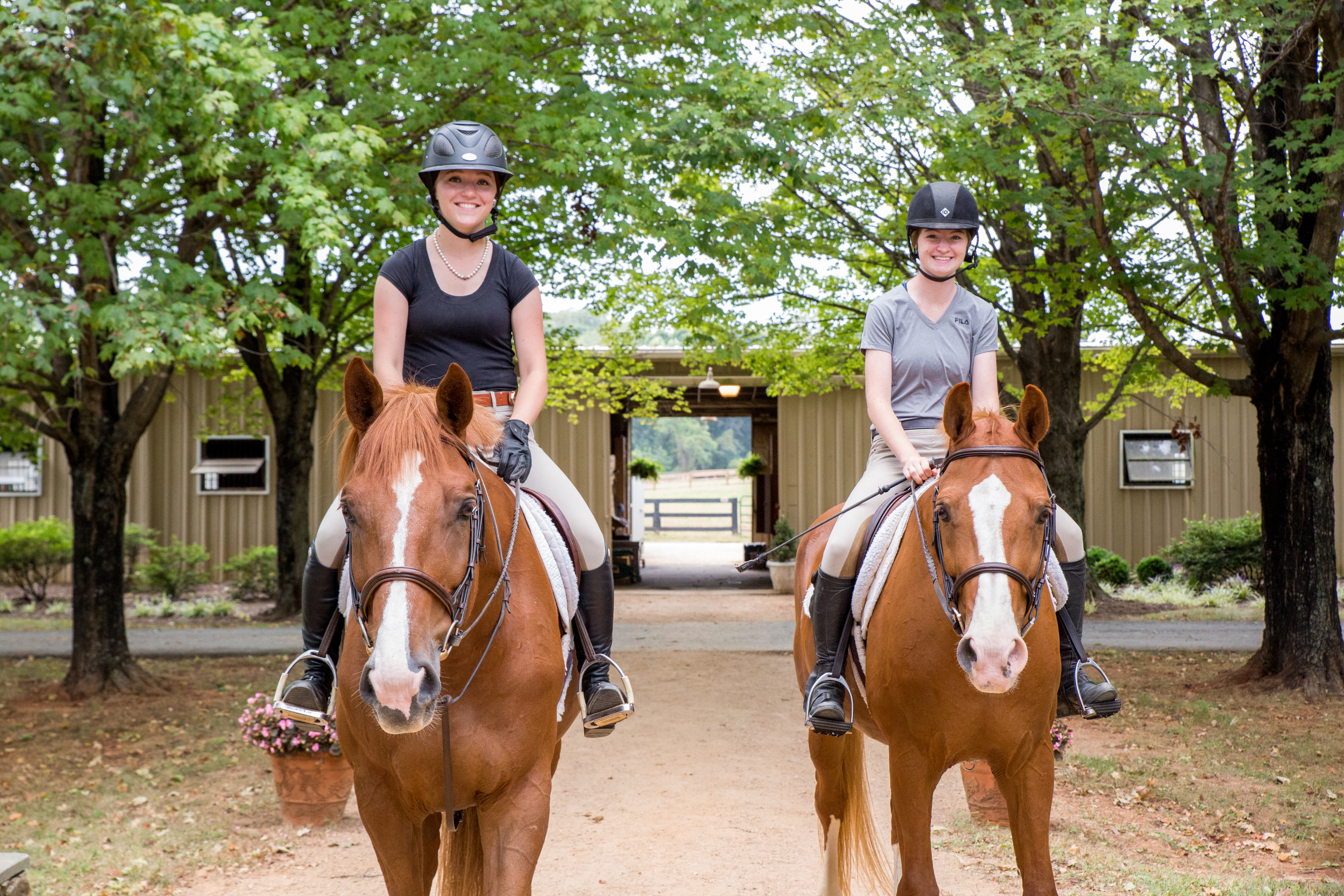
4. Take Riding as Physical Education
Universities that have an equestrian facility on campus, typically those with equine studies and/or agriculture programs, often offer horseback riding as a physical-education class. The level of riding may not be quite what you are used to, but it’s an affordable way to get a regular fix of saddle time and stable scents.
5. Consider Unfamiliar Disciplines
College is a time of exploration that can reach far beyond academics. If you’re a jumper rider and you find yourself at a college in the Mecca of working ranch Quarter Horses, say “yes” to any chance to take another saddle and a different type of horse for a spin. Open minds open doors!
6. Comingle Academics And Equestrian Interests
Most college academic tracks encourage or require an internship in your field of study. If you’re an accounting or marketing major, for example, reach out to an equine-related company and ask about internships where those skills can be applied. You may or may not get out in the field with horses, but at least you’ll be working alongside fellow horsepeople and gaining career experience.
Or work it from the other direction: “There are so many ways to get involved in research with horses or as an athlete,” suggests Duke University senior and jumper rider Mackenzie Drazan. “Whatever your major is, think of ways to apply it to the equestrian world. If it’s economics, study the economics of the horse business.”
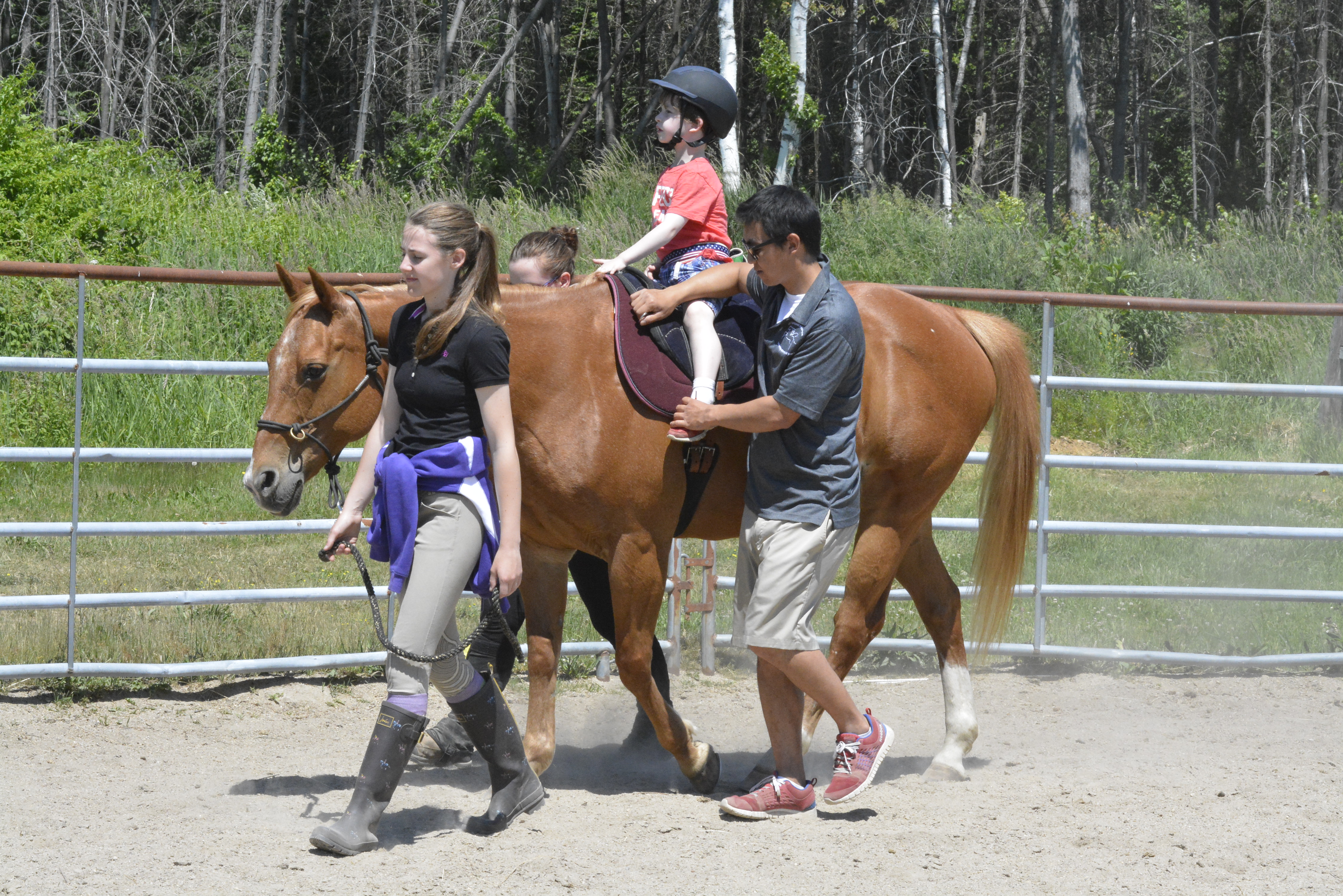
7. Volunteer with a Therapeutic Riding Center
Michelle Hockley, volunteer coordinator at SIRE Therapeutic Riding in Houston, Texas, loves college (and high-school) students. From a practical perspective, they are often available to cover afternoon and evening activities that adult volunteers cannot.
Volunteers with horse experience are great candidates for leader roles at SIRE.That involves getting a horse ready for his session with a client: grooming, laying out the tack, etc. Volunteers who are comfortable around horses and have consistently chipped in for a semester or more are candidates for SIRE’s barn buddies program. “You get assigned to be a buddy to one of our horses to give them some extra love.” Most opportunities involve ground work, not riding, although “there is a little avenue here where a few girls, experienced equestrians, will ride our horses.”
The side-walker role is completely client-focused, so it does not require previous horse experience but will get you out to the barn. Stall muckers and aisle sweepers are always in demand.
As far as time commitment, SIRE requires one hour a week, at a specific time, and “to treat it like a job—a fun one.
“It’s really a great place to volunteer,” Michelle continues. “It’s outside, it’s physical, the clients are amazing and I think it gives you a better appreciation for everything. It’s really neat to see these riders and horses bond.”
The Professional Association of Therapeutic Horsemanship International is a good resource for locating a program near you. Visit www.pathintl.org, which has a national directory of centers.
8. Volunteer with an Equine Rescue
“We, and every rescue I know of, are always short of volunteers,” says Mary Martin, founder and president of New England Equine Rescue North, Inc., in West Newbury, Massachusetts. The available task list at NEER is long: barn and stall cleaning, grooming, yard work and general maintenance, for starters.
Mary notes that every rescue has a different approach to riding its horses. If the horse landed at NEER because of behavioral issues, retraining, if possible, is critical to the “rehabilitate and re-home” part of its mission. “I do allow volunteers to ride our horses, but they have to be very advanced,” Mary explains. “Most [horses] have issues that need to be worked through to make them adoptable.
“We also have horses that are dead- safe for a beginning horseperson to learn grooming skills,” she continues. “We’re happy to show people who don’t know about horses how to work with them safely.”
Volunteering at a rescue can be the equivalent of earning a masters degree in horsemanship, especially for those considering or enrolled in a pre-veterinary track. It can be an eye-opener for those coming from a background with fat, shiny show horses. A horse who’s food-aggressive, for example, might seem to warrant a permanent bad-boy label. Often, though, that behavior disappears once his starvation days are behind him.
Beyond having volunteers work directly with the horses, rescues also rely on administrative help, and social-media savvy is a blessing for promoting awareness, events and fundraising.
NEER is flexible regarding volunteer schedules, and there’s always extra need on the weekdays and during bad weather.
Vetting a rescue’s legitimacy is an important pre-volunteer step. NEER, for example, is a certified 501c3 charitable organization and is well-rated by several nonprofit monitoring organizations, including GuideStar. It’s also a member of A Home For Every Horse (www.ahome
foreveryhorse.com) and the Unwanted Horse Coalition (www.unwanted
horsecoalition.org). Both organizations are good places to start the search for a reputable rescue.
9. Volunteer at a Competition or Clinic
Competition and clinic organizers are almost always in need of warm bodies, and a warm body with horse experience is especially valuable. This is true of eventing and dressage competitions of any size and hunter/jumper shows that are smaller and/or run by local organizations.
Organizers usually have an online sign-up process or volunteer coordinators who will happily plug you into a fun and often educational position. This is a great way to get acquainted with the equestrian scene in your college’s area and start networking in ways that might lead to riding opportunities down the road.
Visit the websites of each discipline’s U.S. Equestrian Federation affiliate to find event calendars that can be filtered by region. For dressage, that’s www.usdf.org; for eventing, it’s www.useventing.com; for hunter/jumpers, it’s www.ushja.org. And don’t forget U.S. Pony Club: www.ponyclub.org.
Wherever you volunteer, take it seriously. Be reliable, respectful and enthusiastic about the opportunity to be out and about among horses and horsepeople. You never know where it will lead you.
10. Start a Team
Kate Boggan of San Antonio went to Texas A&M to earn an animal-science degree. The big school in College Station, Texas, has National Collegiate Equestrian Association hunt seat and Western teams, but as a lifelong eventer, Kate wanted an opportunity to ride for her school. So she started an eventing team herself. She had guidance from the school’s club activities’ administrators but did most of the work herself and with the team’s charter members. It helped significantly that Kate spent two summers interning for the U.S. Eventing Association just as the organization was launching its Intercollegiate Eventing Program. She gained first-hand experience with marketing and sponsorship issues and applied it all when the club got its official start in the fall of 2015.
Along with being able to event under the Aggies’ maroon banner, Kate got a significant leg up in her career preparation and planning. “I was interested in equine reproduction and I still enjoy that, but after starting the eventing team I found that I really love this administrative role, so I may be looking for a career on that side of the business,” she explains. “Starting the team opened up a pool of opportunities and skills that I didn’t even know I had.” The organizing, promoting, travel-arranging, budgeting and fundraising skills required to start and maintain a club equestrian team are terrific resume highlights for riders galloping off into any professional field.
Balancing barn time while enrolled in a college or university may be challenging, but it is possible to achieve. Whether it’s riding on a team, volunteering or trying something new, there are plenty of straightforward as well as unconventional options within reach.
College Riding Organizations
Intercollegiate Horse Shows Association
IHSA offers opportunities for riders of all experience levels in both team and individual competition. IHSA features eight levels, on the flat and over fences with courses starting at 2-foot-3 in the Novice division and going up to 2-foot-9–3-foot for Open riders.
Established in 1967, the IHSA counts nearly 400-plus member colleges, whose teams range from the competitive to casual in terms of time commitment and intensity. The IHSA’s mission emphasizes learning, sportsmanship, fun and keeping equestrian involvement affordable for students.
The IHSA has several scholarship programs, and many of its member schools offer financial help toward college expenses. These range from academic scholarships to grants and traditional financial aid.
For more information, visit www.ihsainc.com.
National Collegiate Equestrian Association
NCEA competition is head to head. One rider from each school rides the same horse, drawn randomly in a Hunter Seat Equitation class, either on the flat or over a course ranging in height from 3-foot to 3-foot-6. The winner earns the point for her school.
The NCEA equestrian league was launched in 1998 and currently has 22 schools participating with varsity teams that are funded by each school’s athletic department, just as a football or soccer team is. Most coaches have some athletic scholarship money to offer and a few give generous packages to top-circuit riders.
For more information, visit www.collegiateequestrian.com.
American National Riding Commission
The ANRC is education-driven and dedicated to promoting the American System of Forward Riding as taught by Captain Vladimir Littauer. The focal point of its competitive endeavor is the invitational ANRC National Intercollegiate Equitation Championship, typically held in April. Schools field a team of their strongest riders to compete against other ANRC squads. Unlike in IHSA and NCEA competition, exhibitors can ride either the school’s or a privately owned horse in the championship. Riders are judged over four phases that include a USEF Hunter Equitation test, a 3-foot Hunter Seat Equitation Medal course, 3-foot Derby course and a written test covering riding theory and stable management. A Novice division offers similar tests at a 2-foot-6 fence height. (ANRC also has programs for middle- and high-school age riders.) Approximately 90 schools have contested the Championship over its 40-year history. For more information, visit www.anrc.org.
Intercollegiate Eventing Program
A handful of colleges have had eventing teams for many years, and the U.S. Eventing Association created a formal structure for collegiate eventing by launching the IEP in 2014. An increasing number of Intercollegiate Team Challenges are being added to existing horse trials throughout the country, especially in the southeast. The Intercollegiate Eventing Championships debuted in 2016 and, in 2017, teams from 17 schools participated. They were held during the Virginia Horse Trials in Lexington, Virginia, in May, and 2016 reserve champs, the Clemson Tigers, emerged the victors.
IEP teams vary in the details of how and by whom they are run, but almost all members ride their own or a leased horse. The rigors and risks of eventing make catch- riding an unsuitable option. Eventing is well-known for its team spirit, and many college squads offer membership to nonriders who want to chip in from the ground and share their horsey enthusiasm with like-minded students.
For more information, visit www.useventing.com/membership/intercollegiate.
Intercollegiate Dressage Association
The IDA was formed in 1995 and today counts approximately 40 colleges with teams participating in regional and national dressage competition. For shows, IDA schools field a team of four riders and compete in four levels, Introductory, Lower Training, Upper Training and First Level, riding horses provided by the host school.
For more information, visit www.teamdressage.com.
This article was originally published in the December 2017 issue of Practical Horseman.







